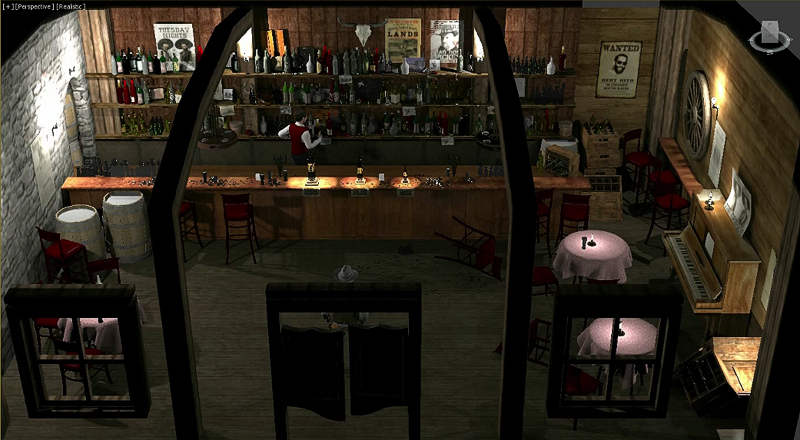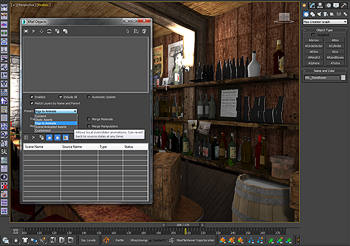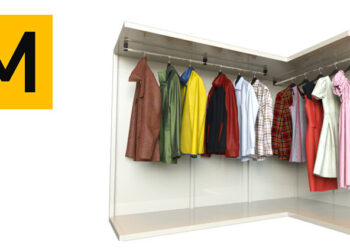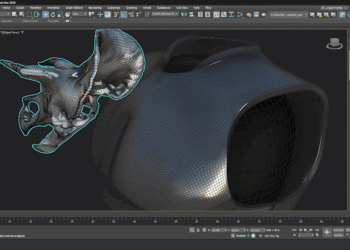Alembic support
In this reviewer’s opinion, the breadth of support for the
open-source Alembic format is one of the most exciting additions to an
already impressive release. Autodesk first revealed their official
Alembic implementation in 3DS Max 2015 extension 1, but the additional
improvements for Max 2016 are nothing short of astounding. Two
fantastic features have been added amongst a tonne of bug fixing and
compatibility improvements.
First is the Playback graph.
Users familiar with the 3DS Max point cache system’s playback graph
will feel right at home. Playback graph allows you to retime, loop,
reverse and offset the animation of an alembic cache. This offers
extreme power and flexibility and opens the door to many procedural and
collaborative workflows.
This video demonstrates how the Alembic Playback Graph can be
used to instance animation across hundreds of objects
The video above shows how I recently used the Alembic playback
graph to quickly create a river scene full of 200 animated animals –
each animal instancing an Alembic animation cache. I was able to easily
swap out geometry or animation while retaining each object’s animation
offsets.
The second key feature added to Alembic is the Performance
Mode and frankly, it has to be seen to be believed. The
easiest comparison is After Effect’s RAM Preview; select an alembic
cache in your scene, activate performance mode and a green progress bar
will begin to fill the 3DS Max timeline as frames are loaded into the
video card’s memory. The video card will then be utilized for playback
of the cache and insane frame rates can be achieved.
An overview of the new Alembic Performance Mode and how it
handles large geometry caches
A crucial lack of finer cache controls lets this feature down
a bit and it’s not quite practical with extremely large files, but the
video above demonstrates Performance mode playing back a 106GB
RealFlow sim at 20 frames per second on modest hardware,
which is very impressive.
An example of how Alembic Performance mode can be used in
production
The 3DS Max team’s support of the Alembic specification is
robust, however they’ve also added support for 3DS Max-specific
“material IDs”. Alembic’s been tested in production by many talented
members of the 3DS Max beta team over the course of development and
while some data such as arbitrary channels currently have limited
support, it’s a fantastic addition to every 3DS Max user’s toolkit
regardless of your discipline. Time spent investigating Alembic and how
it can be utilised in your pipeline is time well spent!
Xref “Renovations”
Alembic is complemented by some much appreciated improvements
to 3DS Max’s flawed referencing system. It’s laughable that in this day
and age, a core feature such as asset referencing has been so finicky,
difficult and unreliable. 3DS Max already offers a range of limited
options for file referencing including file links, Containers, XREF
Object and XREF scene and users unfortunately have to spend valuable
production time researching the limitations
of each of these before committing to them for a project.
Thankfully, some serious improvements have been made to the
XREF object system in this release. There are now fantastic options for
referencing objects, controllers, modifiers and materials into scenes
and Autodesk claim that rigged characters can now be correctly
referenced into scenes. Yes, this is possible
but updating the rig of a referenced character without
losing local animation is still very cumbersome.
XREF in 3DS Max still pales in comparison to Maya’s solid
referencing system but it’s worth noting that 3DS Max 2016 is a non-SDK
breaking release – the developers were very limited in the changes they
could make to the XREF system. With this in mind, it’s impressive what
has been done and one can only hope that 3DS Max 2017 can deliver on
what the team have started. The goal of allowing a very non-destructive
workflow has –mostly – been delivered. Though this is the way it should
be and the way other DCC apps have operated for years.
The bottom line – XREF-improvements in 3DS Max 2016 are great
but they unfortunately do still require a R&D investment on
behalf of your team before committing to these new features in
production.












